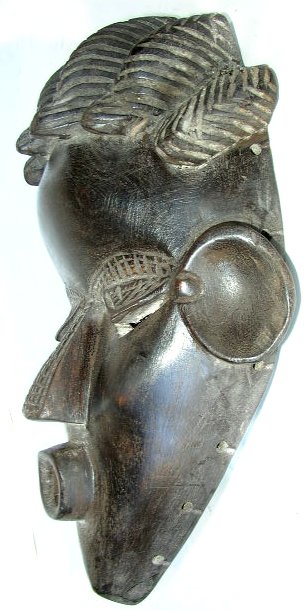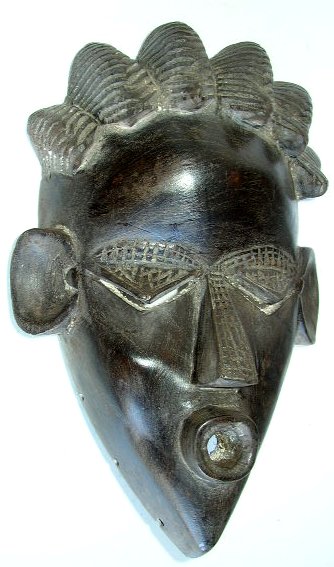
 Bassa (Basa), Liberia
Bassa (Basa), Liberia
Geh-naw ceremonial mask. The Bassa
numbering just under 300,000 live in the middle of present-day Liberia. They practice
shifting cultivation, with rice as the dominant crop in the interior and cassava more
prominent near the coast. They are patrilineal and live in small settlements seldom
numbering more than two hundred inhabitants. The Bassa have both men’s and
women’s societies and practice both circumcision and clitoridectomy. Bassa artistic
tradition has been strongly influenced by their northeastern neighbors, the Dan and has many similarities with the classical northern Dan style
of idealized naturalism. Bassa carvers are famed for
their two-planed gela (geh-naw) masks worn during the no men's society ceremonies when the
wearer of the mask moves with feminine grace. With their graceful, gliding dances the geh-naw
masqueraders entertain the spectators when initiated boys return from bush camp, when
important guests visit the village, and on other festive occasions. The dancer wears the
mask, which is attached to a woven framework, on his forehead, and looks through the slit
in the fabric, which is part of the costume that covers his head and upper body. Because
the masks are fixed on a framework, the interior of most such masks shows no signs of
wear.
Material: wood
Size:
11”x7”x3”

 Bassa (Basa),
Bassa (Basa), 
 Bassa (Basa),
Bassa (Basa),